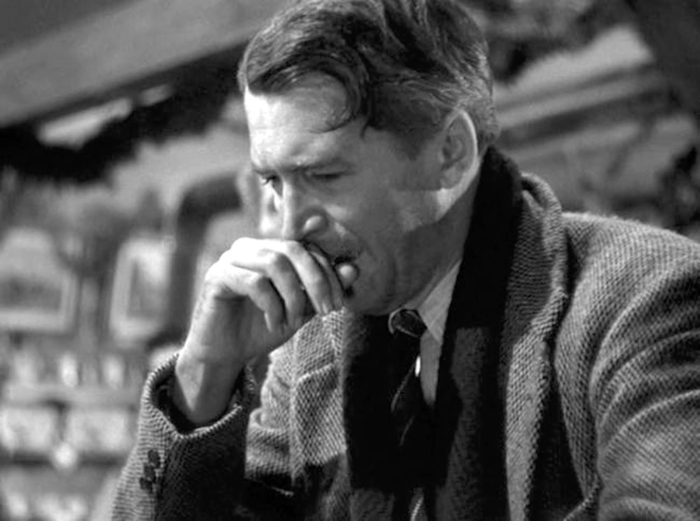The United States Department of Veterans Affairs has a helpful primer on classic signs and symptoms of PTSD (Post Traumatic Stress Disorder).
And with PTSD suddenly in the news again, as ubiquitous as it is (6% lifetime prevalence in the United States, a surge globally — look at Spain), and as silent a destroyer as it is, I wanted to highlight two key symptoms that don’t immediately come to mind in the popular conceptualization of PTSD.
Beyond the “classic signs”, The American Psychiatric Association includes this key bit, and I’ve bolded and italicized the symptoms that lurk as dangerous as any other.
People with PTSD have intense, disturbing thoughts and feelings related to their experience that last long after the traumatic event has ended. They may relive the event through flashbacks or nightmares; they may feel sadness, fear or anger; and they may feel detached or estranged from other people.
That bit about sadness, detachment, and estrangement is the part you might feel, but not recognize as symptoms of PTSD.
If you feel overwhelming sadness and estrangement for a protracted period after a triggering event, it’s a good idea to check with a doctor and get their opinion.
You might have PTSD, and instead of growing angry and volatile, you turn inward and find it difficult to engage with the world as you knew it before the triggering event occurred.
And that’s because the world as you knew it seems to have fundamentally changed, and the slew of things unrolling over time can be surprising, unnerving, and we don’t know what’s going on because things that seem totally unrelated to the trigger provoke symptoms.
You might panic over driving your car, when the traumatic event had nothing with driving, at all.
You might have trouble ordering a coffee and you don’t know why, because what could ever have gone wrong with ordering a coffee? Yet there you are, and ordering coffee can fill you with dread and where did that come from?
And interacting with people you knew before? That’s where it gets enormously tricky.
Again, there’s this sense the world has started to spin in a different direction from before, and you’re suddenly a newborn baby, except that you don’t have naive wonder, only disconsolate fear.
“How do I survive in this new world?” You might ask yourself quietly.
And we do ask it quietly.
While the rest live, we “live” too. On the same but different world.
And you’re terrified about it all, but you stay quiet and don’t talk about it with others because…
A) they’ll say they “get it” but, if they’ve never been through it, you suspect that “no, they don’t get it” because you never got it before you got it.
Or…
B) they won’t get it at all, and you’ll see the skepticism on their face as you’re sharing your pain, and you know how that skepticism will intensify your bleed, and it’s not just your pain they’re unwittingly violating, but also, it feels, your very soul. I’m not being hyperbolic there.
And that’s because trauma and pain is sacred.
In his book, A Crazy Holy Grace: The Healing Power of Memory and Pain, Frederick Buechner (whose father committed suicide when he was just a boy) describes just how sacred and precious (as in rare, valuable, fragile) it is.
“Pain is treasure. Pain is horror. Pain is that which tempts you like Christ on the cross to say, “My God, my God, why did you abandon me?’ Pain is negation of everything that seems precious.”
If you think of your pain as something precious (and certainly God does), then it’s understandable why you might keep it to yourself.
It’s both an instinctive and protective response.
And because the feelings often paralyze us, well, that word explains it. If the world feels fundamentally unsafe, then how can a strange doctor’s office be any different?
So yeah, we keep it to ourselves.
And that leads to the sadness and estrangement that the American Psychiatric Association talks about it.
I would urge you talk to a psychiatrist or psychologist about it. I know that sounds easier than it is. But they will be a safe place with the thing you can’t explain to anyone else – the awful thing you can’t explain from a failure of your emotional capacity. I know this from experience.
A professional will know, they will recognize. They will not dishonor your pain. They will treat it as something precious and rare.
And then, the bonus is that they can help you start on the process to healing.
Finally, I want to add this.
Once you feel you’ve made some kind of progress, under professional guidance, then I’d offer this observation from my personal experience (and I’m still definitely a work in progress).
I’ve found myself starting to open up around others who are clearly struggling with PTSD, as well. Not with the rest of the world but anyone I see in that place. That basement, that Sheol, and you recognize it, and you share your experience, and it can lead to exactly what Paul described when he talked about strengthening each other.
My closest friendships have come from those who’ve been to that place.
Now when it comes to PTSD, sometimes we think, “Well, I was never in a war, I’m not a vet.” But I can tell you that we all fight our own battles, and as T.S. Eliot reminded us in “The Four Quartets,” all pain really is unique and the same.
And here, I end with Buechner’s final thought on pain as treasure from the passage I quoted above.
“It seems to me so significant that we can come together in places where there is a sense of safety. And, as we come together and try to give each other the most precious thing we have to give because in some sense or another we love each other, what we give each other again and again is our pain. The most precious thing I have to tell you about is the sadness. You don’t have to talk about pain, but you have to live out your pain. Speak out of your depths.”
So… if you think you have PTSD, talk to a professional about it. In fact, by the time we look for help, PTSD has hardened in many. After all, sometimes it’s tough to know if an acute thing is going to turn into an ongoing thing.
Here are some resources for more on the condition, some helpful guides, and links to professional help at the bottom.
The NHS’ guide.
The University of Rochester Medical Center: Healing from Post-traumatic Stress Disorder.
WebMD: “What are the treatments for PTSD?”
Compassion Behavioral Health: “Explaining PTSD Recovery Stages.”
Finally, a key research finding from 2024, explained in this Harvard piece: “PTSD’s genetic component validated in new study,” and I write about it here.
I pray for you, for me, for all of us. We depend on Christ, and as Brennan Manning wrote, “All is mercy.”
If you suspect you have PTSD, are anxious, depressed, or struggle with any aspect of mental health…
For readers from the United States….
Find a psychiatrist here.
Find a therapist here.
For readers, internationally, seek help from a local resource.
For salvation, Christ and Christ alone.
[Photo: A classic photo from my favorite movie — in that film, Jimmy Stewart was genuinely channeling his extreme PTSD from returning as a pilot from WW2. Which is why I think his George Bailey is one of the most compelling performances in cinematic history.].

